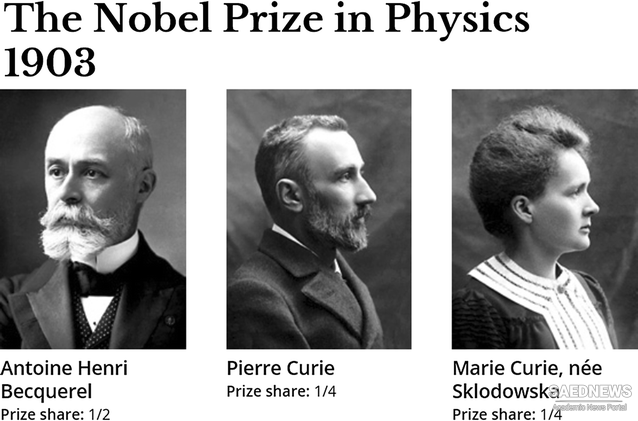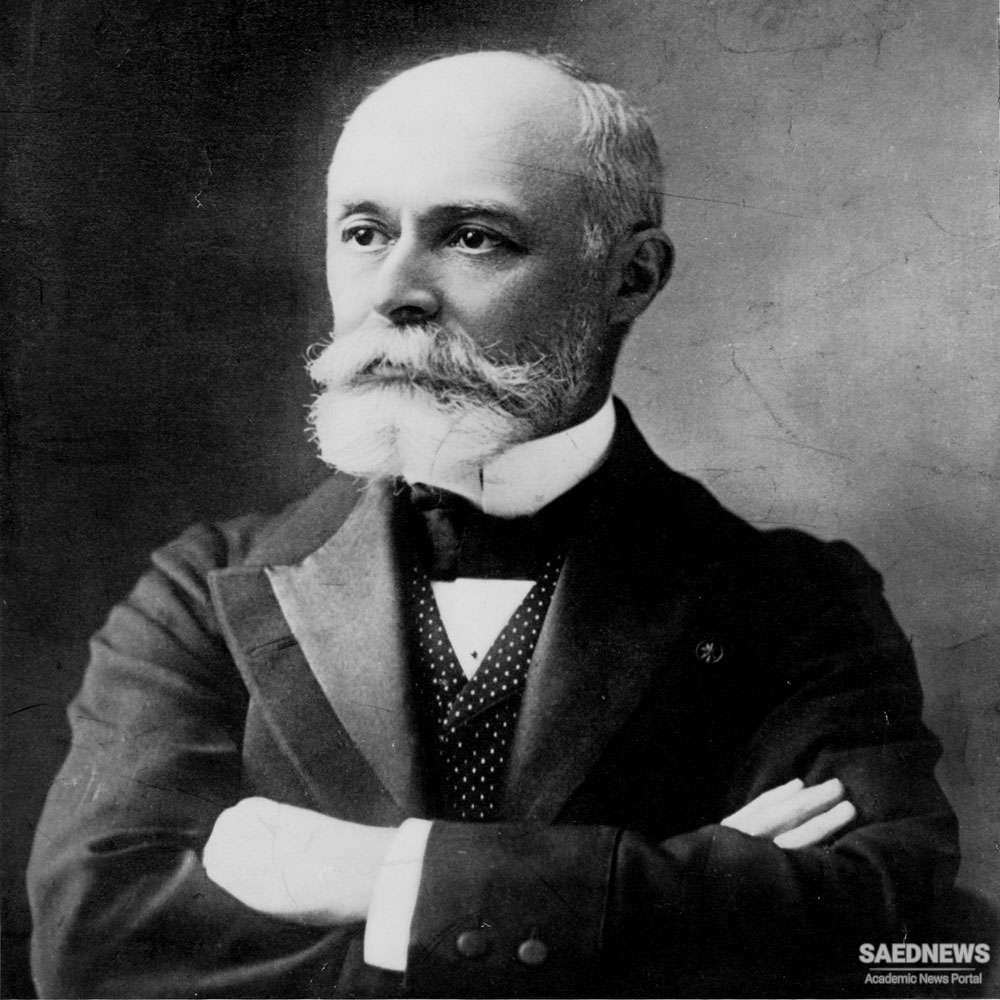His grandfather (Antonine César Becquerel) had fought for France under Napoléon and later became a fellow of the Royal Society. His father (Alexander Edmond Becquerel) was a professor of applied physics at the Natural History Museum in Paris. Following his family’s scientific tradition, Henri began studies at the École Polytechnique in 1872 and received his doctorate in physical science in 1888. From 1878, he had held an appointment as an assistant at the Museum of Natural History and in 1892, he succeeded his father as professor of applied physics at the Natural History Museum. He became a professor of physics at the École Polytechnique in 1895.
Like his father, Becquerel investigated the phenomenon of phosphorescence and the absorption of light by crystals. This work positioned him for a serendipitous discovery that would help launch the field of nuclear physics. Wilhelm Roentgen’s discovery of X-rays in late 1895 encouraged Becquerel to investigate whether there was any connection between X-rays and naturally occurring phosphorescence in uranium salts. He had inherited a supply of uranium salts from his father, and these mineral compounds would phosphoresce on exposure to light. Becquerel began to experiment by exposing various crystals to sunlight and placing each crystal on an unexposed photographic plate that was wrapped in black paper. He reasoned that if any X-rays were produced, they would penetrate the wrapping and create a characteristic spot that would be developed on the photographic plate. To his initial delight, he indeed observed just such an effect when he used uranium potassium sulfate as his phosphorescent material. Quite by accident, he stumbled upon the phenomenon of radioactivity in late February 1896.

Becquerel could not expose his uranium salts to sunlight for several days because there was no sunshine. He placed a piece of uranium salt on top of a photographic plate that was sealed in dark paper and kept the combination in a drawer because of the inclement weather. For no particular reason, on March 1, Becquerel decided to develop the black-paper-wrapped photographic plate that had been stored in contact with the uranium salt in the drawer. He discovered that even though the uranium salt was not fluorescing due to exposure to the ultraviolet radiation of sunlight, the crystalline material had produced an intense silhouette of itself on the photographic plate. Becquerel properly concluded that some new type of invisible rays, perhaps similar to Roentgen’s X-rays, were emanating from the uranium compound. He further recognized that sunlight had nothing to do with this penetrating new phenomenon.
Becquerel announced this result in a short paper that he read to the French Academy of Science on March 2, 1896. This new phenomenon was known as Becquerel rays until another nuclear science pioneer, Marie Curie, named the phenomenon radioactivity in 1898.During 1896, Becquerel published seven papers on various aspects of his investigation of radioactivity. He published only two papers on the subject in 1897, however, and none in 1898. The world of physics in the late nineteenth century was filled with all manner of mysterious new “ray” phenomena: radio waves, cathode rays, visible rays from various luminescent materials, and Roentgen rays (or X-rays), so perhaps the real significance of Becquerel rays was simply overlooked in the academic shuffle. In any event, Becquerel did not vigorously follow up on and exploit the exciting results of his initial discovery. It would take the discovery of the radioactivity of radium and polonium by Marie Curie, collaborating with her professor husband Pierre, to awaken the scientific world to the significance of Becquerel’s discovery as one of the defining moments in the history of nuclear science and technology.

Nevertheless, Becquerel made three other important contributions to the emerging field of nuclear physics. Between 1899 and 1900, he measured the deflection of beta particles as they passed through electric and magnetic fields, showing that this beta particle was the same particle as the electron recently discovered by the British physicist J. J. Thomson. He also noticed that freshly prepared uranium apparently lost and then regained its radioactivity. This work anticipated the discovery of the principle of radioactive decay by Ernest Rutherford (1871–1937) and Frederick Soddy (1877–1956) in 1902. Finally, Becquerel inadvertently made an important contribution to health physics and radium cancer therapy in 1901 when he reported experiencing a burn as a result of carrying a sample of radium in his vest pocket. Becquerel shared the 1903 Nobel Prize in physics with Pierre and Marie Curie for his role in the discovery of radioactivity. He also received numerous other honors and scientific medals, as well as membership in prestigious academic societies both in France and in other countries. The French physicist died on August 24, 1908, in Croisiv, Brittany, France. In his honor, the SI unit of radioactivity is called the becquerel (Bq).


 Wilhelm Conrad Roentgen (1845 – 1923)
Wilhelm Conrad Roentgen (1845 – 1923)














































